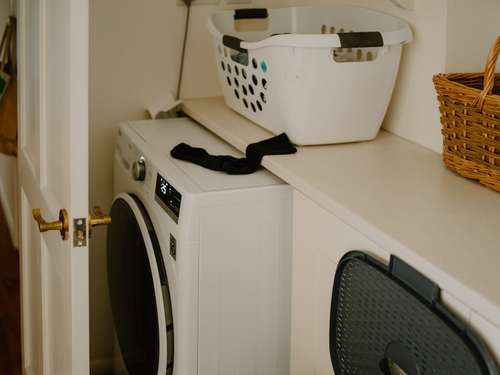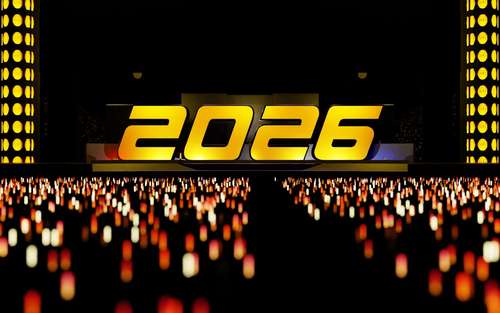 The ISS has to carry out collision avoidance maneuvers to avoid getting damaged by space junk.[/caption]
The business has developed a satellite-mounted space trash detector with funding from the UK Space Agency and investors. It will examine the acoustic waves created by items passing through its thin membrane panels to determine their size, trajectory, and speed.
The current program is incapable of detecting objects smaller than 5cm. Odin can pick up trash as little as 1mm. Because satellites move at such high speeds, even small fragments of space debris can harm delicate equipment carried by satellites.
Dr. New stated, "A millimeter piece of trash in orbit has the collision power of a bullet." "A centimeter-sized object has the explosive power of a hand grenade."
Both NASA and the European Space Agency have developed collision risk models, but according to Dr. New, these are based on outdated data.
In the first three months of next year, the first Odin sensor will be sent into orbit 500 kilometers above the Earth, followed by launches into orbits of 350, 600, and 1200 kilometers. Within a few months, Dr. New hopes to have three devices in each of the four orbits.
However, even 12 sensors would only pick up a small portion of the trash, but Dr. New emphasizes that even the single sensor will reveal data that is currently unavailable. He stated, "Going from nothing to one will be a big improvement."
All satellites launching into orbit, according to the business, would carry their own sensors into space to provide operators with real-time, real-location danger assessments.
In the last three years, over half of the nearly 6000 functioning satellites in orbit have been launched. Elon Musk's Starlink project has launched over 2000 satellites and has applied for another 40,000. 7000 are planned by Amazon. OneWeb, a UK government-owned company, also wants 7000 in space. According to the Satellite Industry Association, there could be more than 100,000 satellites orbiting the Earth by 2030.
The ISS has to carry out collision avoidance maneuvers to avoid getting damaged by space junk.[/caption]
The business has developed a satellite-mounted space trash detector with funding from the UK Space Agency and investors. It will examine the acoustic waves created by items passing through its thin membrane panels to determine their size, trajectory, and speed.
The current program is incapable of detecting objects smaller than 5cm. Odin can pick up trash as little as 1mm. Because satellites move at such high speeds, even small fragments of space debris can harm delicate equipment carried by satellites.
Dr. New stated, "A millimeter piece of trash in orbit has the collision power of a bullet." "A centimeter-sized object has the explosive power of a hand grenade."
Both NASA and the European Space Agency have developed collision risk models, but according to Dr. New, these are based on outdated data.
In the first three months of next year, the first Odin sensor will be sent into orbit 500 kilometers above the Earth, followed by launches into orbits of 350, 600, and 1200 kilometers. Within a few months, Dr. New hopes to have three devices in each of the four orbits.
However, even 12 sensors would only pick up a small portion of the trash, but Dr. New emphasizes that even the single sensor will reveal data that is currently unavailable. He stated, "Going from nothing to one will be a big improvement."
All satellites launching into orbit, according to the business, would carry their own sensors into space to provide operators with real-time, real-location danger assessments.
In the last three years, over half of the nearly 6000 functioning satellites in orbit have been launched. Elon Musk's Starlink project has launched over 2000 satellites and has applied for another 40,000. 7000 are planned by Amazon. OneWeb, a UK government-owned company, also wants 7000 in space. According to the Satellite Industry Association, there could be more than 100,000 satellites orbiting the Earth by 2030.
ODIN Space aims to prevent space junk hitting satellites

Three hundred kilometers or more above the Earth, 6000 satellites are flying blind.
These hi-tech, highly expensive machines are hurtling through a soup of 130 million particles of space trash at 128,000 km/h — seven times the speed of a bullet.
While larger bits of debris, like rocket components and outdated satellites, may be detected from the ground using radar, lasers, and telescopes, many smaller things, such as aluminum scraps and paint flecks, are not.
Satellite operators are also unsure about their location.
"It's like walking around Chernobyl without a Geiger counter," James New, CEO of Odin Orbit, a London-based start-up that plans to launch the first sensor into space early next year to assess the full scope of the problem.
[caption id="attachment_38949" align="aligncenter" width="673"] The ISS has to carry out collision avoidance maneuvers to avoid getting damaged by space junk.[/caption]
The business has developed a satellite-mounted space trash detector with funding from the UK Space Agency and investors. It will examine the acoustic waves created by items passing through its thin membrane panels to determine their size, trajectory, and speed.
The current program is incapable of detecting objects smaller than 5cm. Odin can pick up trash as little as 1mm. Because satellites move at such high speeds, even small fragments of space debris can harm delicate equipment carried by satellites.
Dr. New stated, "A millimeter piece of trash in orbit has the collision power of a bullet." "A centimeter-sized object has the explosive power of a hand grenade."
Both NASA and the European Space Agency have developed collision risk models, but according to Dr. New, these are based on outdated data.
In the first three months of next year, the first Odin sensor will be sent into orbit 500 kilometers above the Earth, followed by launches into orbits of 350, 600, and 1200 kilometers. Within a few months, Dr. New hopes to have three devices in each of the four orbits.
However, even 12 sensors would only pick up a small portion of the trash, but Dr. New emphasizes that even the single sensor will reveal data that is currently unavailable. He stated, "Going from nothing to one will be a big improvement."
All satellites launching into orbit, according to the business, would carry their own sensors into space to provide operators with real-time, real-location danger assessments.
In the last three years, over half of the nearly 6000 functioning satellites in orbit have been launched. Elon Musk's Starlink project has launched over 2000 satellites and has applied for another 40,000. 7000 are planned by Amazon. OneWeb, a UK government-owned company, also wants 7000 in space. According to the Satellite Industry Association, there could be more than 100,000 satellites orbiting the Earth by 2030.
The ISS has to carry out collision avoidance maneuvers to avoid getting damaged by space junk.[/caption]
The business has developed a satellite-mounted space trash detector with funding from the UK Space Agency and investors. It will examine the acoustic waves created by items passing through its thin membrane panels to determine their size, trajectory, and speed.
The current program is incapable of detecting objects smaller than 5cm. Odin can pick up trash as little as 1mm. Because satellites move at such high speeds, even small fragments of space debris can harm delicate equipment carried by satellites.
Dr. New stated, "A millimeter piece of trash in orbit has the collision power of a bullet." "A centimeter-sized object has the explosive power of a hand grenade."
Both NASA and the European Space Agency have developed collision risk models, but according to Dr. New, these are based on outdated data.
In the first three months of next year, the first Odin sensor will be sent into orbit 500 kilometers above the Earth, followed by launches into orbits of 350, 600, and 1200 kilometers. Within a few months, Dr. New hopes to have three devices in each of the four orbits.
However, even 12 sensors would only pick up a small portion of the trash, but Dr. New emphasizes that even the single sensor will reveal data that is currently unavailable. He stated, "Going from nothing to one will be a big improvement."
All satellites launching into orbit, according to the business, would carry their own sensors into space to provide operators with real-time, real-location danger assessments.
In the last three years, over half of the nearly 6000 functioning satellites in orbit have been launched. Elon Musk's Starlink project has launched over 2000 satellites and has applied for another 40,000. 7000 are planned by Amazon. OneWeb, a UK government-owned company, also wants 7000 in space. According to the Satellite Industry Association, there could be more than 100,000 satellites orbiting the Earth by 2030.
 The ISS has to carry out collision avoidance maneuvers to avoid getting damaged by space junk.[/caption]
The business has developed a satellite-mounted space trash detector with funding from the UK Space Agency and investors. It will examine the acoustic waves created by items passing through its thin membrane panels to determine their size, trajectory, and speed.
The current program is incapable of detecting objects smaller than 5cm. Odin can pick up trash as little as 1mm. Because satellites move at such high speeds, even small fragments of space debris can harm delicate equipment carried by satellites.
Dr. New stated, "A millimeter piece of trash in orbit has the collision power of a bullet." "A centimeter-sized object has the explosive power of a hand grenade."
Both NASA and the European Space Agency have developed collision risk models, but according to Dr. New, these are based on outdated data.
In the first three months of next year, the first Odin sensor will be sent into orbit 500 kilometers above the Earth, followed by launches into orbits of 350, 600, and 1200 kilometers. Within a few months, Dr. New hopes to have three devices in each of the four orbits.
However, even 12 sensors would only pick up a small portion of the trash, but Dr. New emphasizes that even the single sensor will reveal data that is currently unavailable. He stated, "Going from nothing to one will be a big improvement."
All satellites launching into orbit, according to the business, would carry their own sensors into space to provide operators with real-time, real-location danger assessments.
In the last three years, over half of the nearly 6000 functioning satellites in orbit have been launched. Elon Musk's Starlink project has launched over 2000 satellites and has applied for another 40,000. 7000 are planned by Amazon. OneWeb, a UK government-owned company, also wants 7000 in space. According to the Satellite Industry Association, there could be more than 100,000 satellites orbiting the Earth by 2030.
The ISS has to carry out collision avoidance maneuvers to avoid getting damaged by space junk.[/caption]
The business has developed a satellite-mounted space trash detector with funding from the UK Space Agency and investors. It will examine the acoustic waves created by items passing through its thin membrane panels to determine their size, trajectory, and speed.
The current program is incapable of detecting objects smaller than 5cm. Odin can pick up trash as little as 1mm. Because satellites move at such high speeds, even small fragments of space debris can harm delicate equipment carried by satellites.
Dr. New stated, "A millimeter piece of trash in orbit has the collision power of a bullet." "A centimeter-sized object has the explosive power of a hand grenade."
Both NASA and the European Space Agency have developed collision risk models, but according to Dr. New, these are based on outdated data.
In the first three months of next year, the first Odin sensor will be sent into orbit 500 kilometers above the Earth, followed by launches into orbits of 350, 600, and 1200 kilometers. Within a few months, Dr. New hopes to have three devices in each of the four orbits.
However, even 12 sensors would only pick up a small portion of the trash, but Dr. New emphasizes that even the single sensor will reveal data that is currently unavailable. He stated, "Going from nothing to one will be a big improvement."
All satellites launching into orbit, according to the business, would carry their own sensors into space to provide operators with real-time, real-location danger assessments.
In the last three years, over half of the nearly 6000 functioning satellites in orbit have been launched. Elon Musk's Starlink project has launched over 2000 satellites and has applied for another 40,000. 7000 are planned by Amazon. OneWeb, a UK government-owned company, also wants 7000 in space. According to the Satellite Industry Association, there could be more than 100,000 satellites orbiting the Earth by 2030.
Share this article
Author
Related Posts

New Jersey Enacts Statewide K-12 Cell Phone Ban: Gov. Murphy Signs 'Restore the Classroom' Bill

Kate Middleton Breaks Silence: Emotional Health Update on 44th Birthday

CES 2026 Wrap-Up: The $3,000 Robot That Folds Your Laundry is Actually Here
